Evaluation of the usefulness of colonoscopy with mucosal biopsies in the follow-up of TNBS-induced colitis in rats
- Authors:
- Magdy El-Salhy
- Ingvild Haukaas Wendelbo
- Doris Gundersen
- Jan Gunnar Hatlebakk
- Trygve Hausken
-
View Affiliations
Affiliations: Section for Gastroenterology, Department of Medicine, Stord Helse-Fonna Hospital, Stord, Norway , Department of Research, Helse-Fonna, Haugesund, Norway, Section for Gastroenterology, Institute of Medicine, University of Bergen, Bergen, Norway
- Published online on: June 17, 2013 https://doi.org/10.3892/mmr.2013.1528
-
Pages:
446-450
Metrics:
Total
Views: 0 (Spandidos Publications: | PMC Statistics:
)
Metrics:
Total PDF Downloads: 0 (Spandidos Publications: | PMC Statistics:
)
This article is mentioned in:
Abstract
Animal models are required for research regarding the pathogenesis and efficacy of anti-inflammatory agents in inflammatory bowel disease (IBD). Trinitrobenzene sulfonic acid (TNBS)-induced colitis closely mimics Crohn's disease. The present study was undertaken in order to determine the reliability of following the inflammatory course of TNBS-induced colitis using colonoscopy together with biopsy samples obtained during the examination. In this study we used 20 adult male Wistar rats, with a mean weight of 201.9 g. The rats were divided into two groups, control and TNBS, with ten rats in each group. Following the induction of TNBS colitis, the rats underwent colonoscopy with mucosal biopsies. At the end of the experiment, the rats were sacrificed and whole-wall colonic samples were obtained. The degree of inflammation was assessed endoscopically, macroscopically and microscopically. There was no significant change in the body weight of the control group but significant weight loss was observed in the TNBS group. Examination of the control group did not reveal any inflammation. Severe colitis was observed in the TNBS-induced colitis rats, as assessed endoscopically, macroscopically and microscopically. The endoscopic inflammation score obtained through colonoscopy examinations correlated with that obtained macroscopically, and those obtained microscopically from the whole-wall colon and biopsy samples collected during the colonoscopy. Moreover, the inflammation scores obtained from the whole-wall colon and biopsy samples collected during colonoscopy correlated markedly. In conclusion, colonoscopy is a reliable method for following up the course of inflammation in experimentally induced colitis. Although biopsy samples collected during colonoscopies may be used to assess the degree of inflammation, whole-wall samples are superior in this regard.
View Figures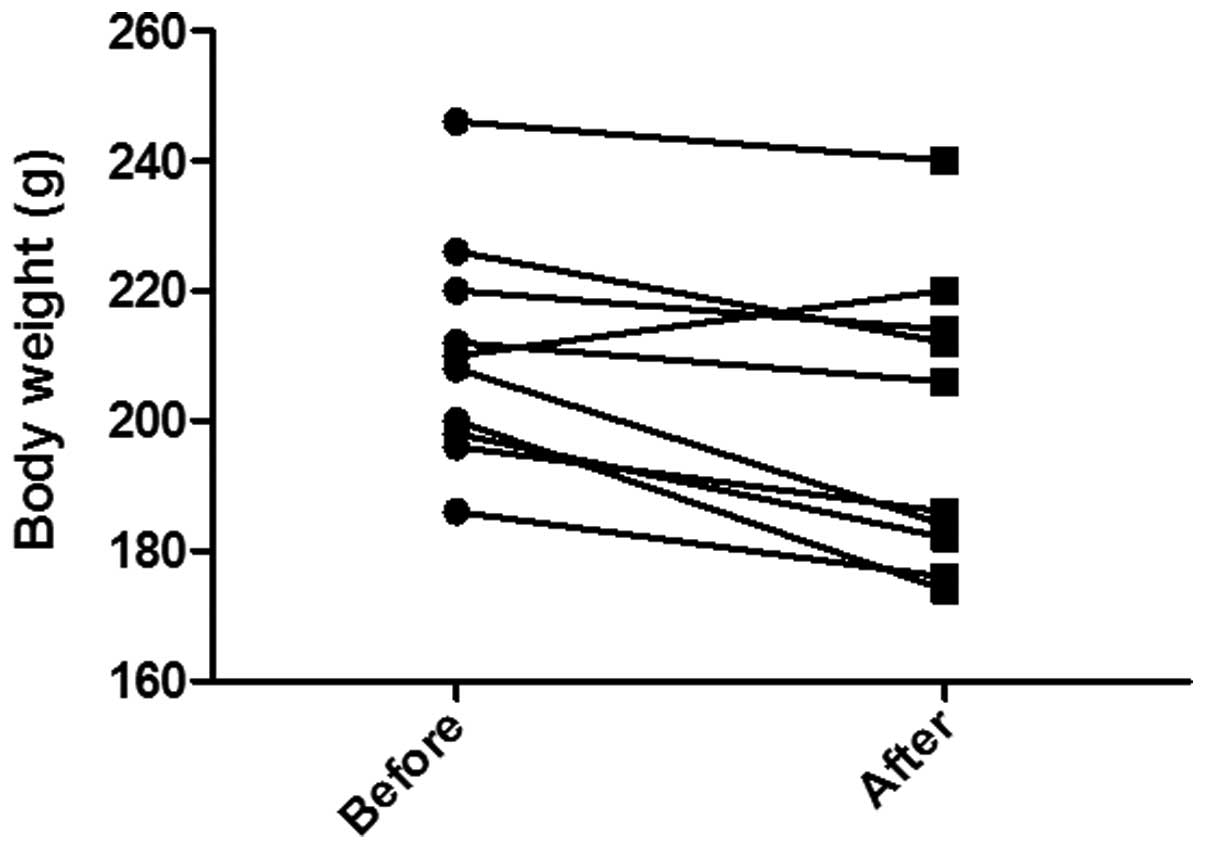 |
Figure 1
|
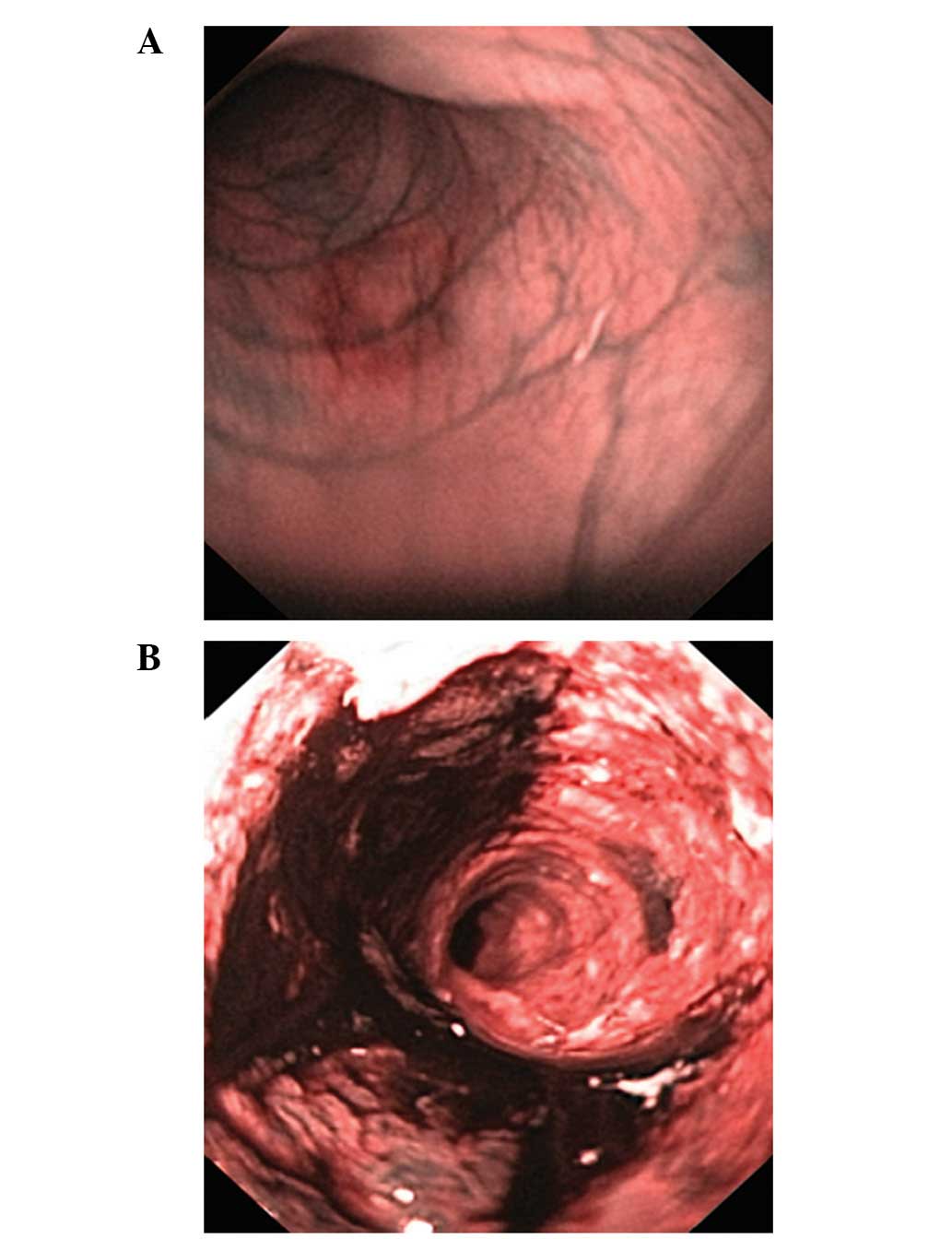 |
Figure 2
|
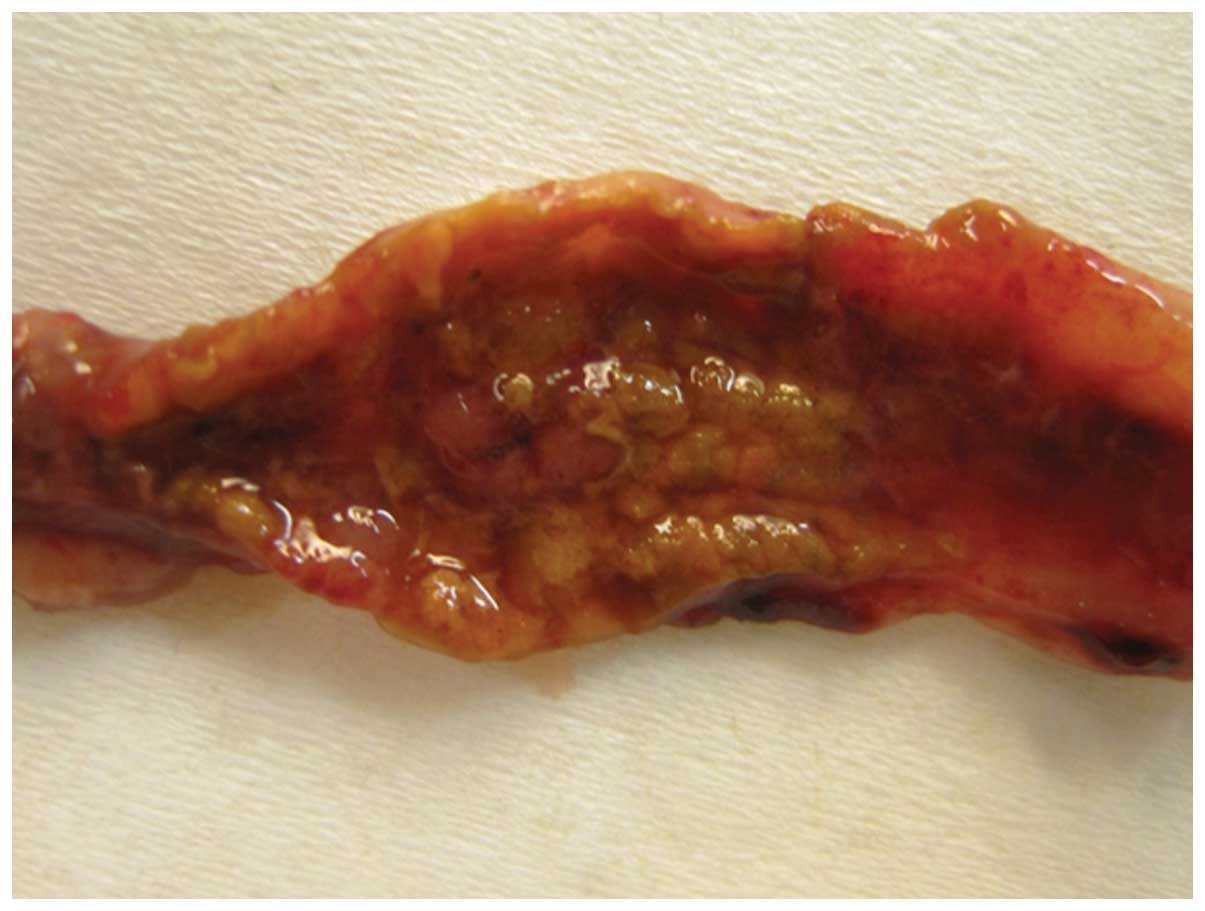 |
Figure 3
|
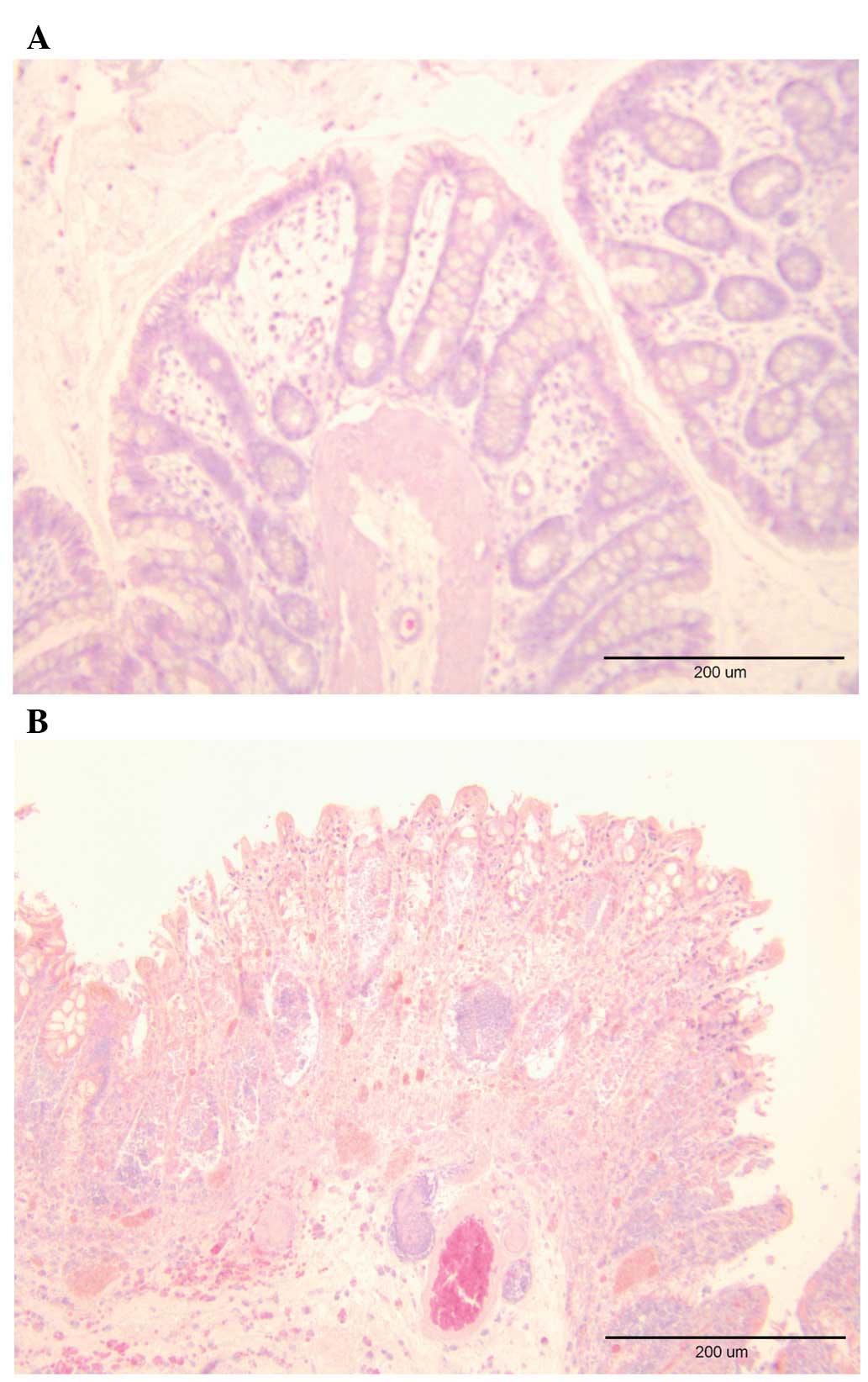 |
Figure 4
|
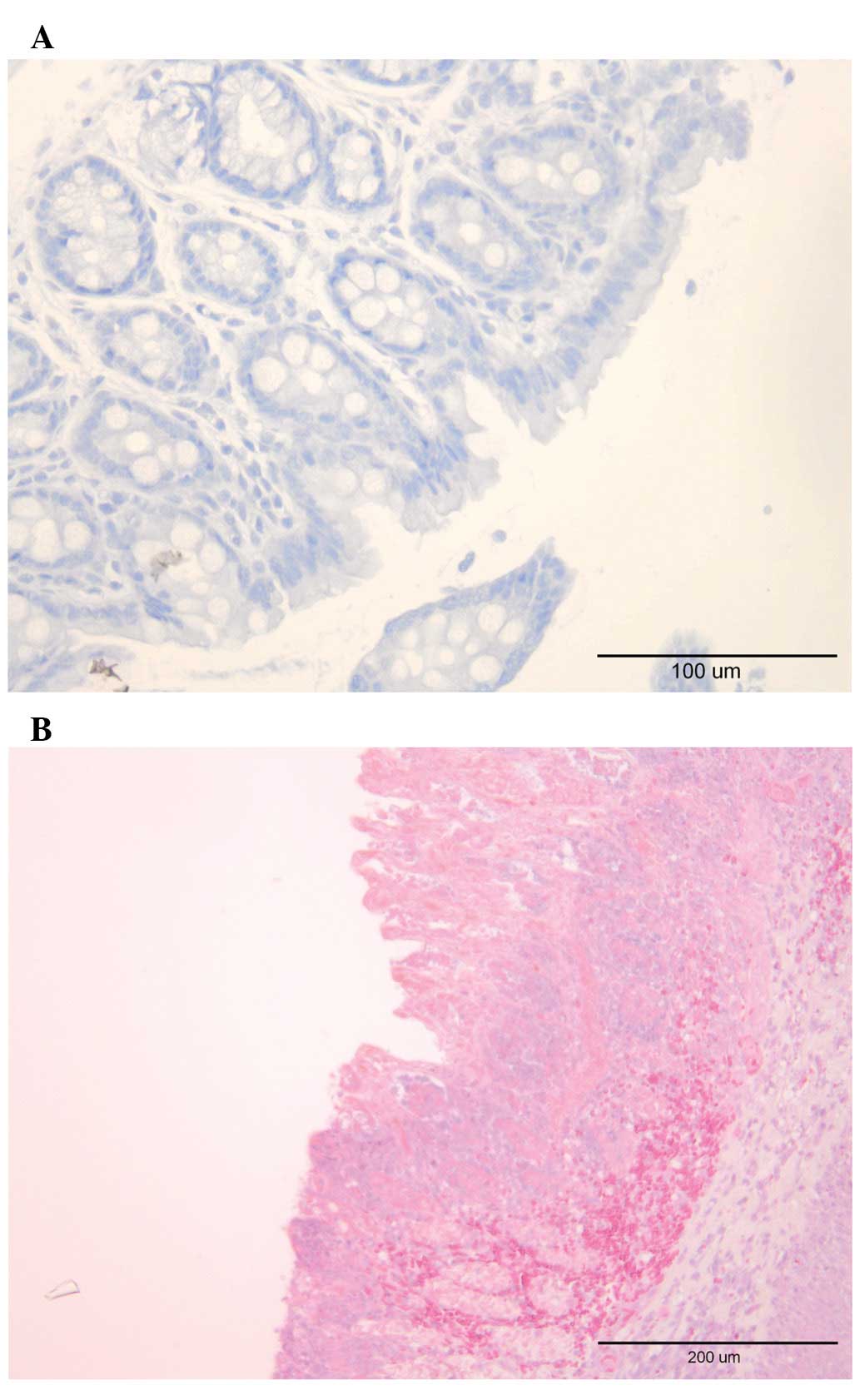 |
Figure 5
|
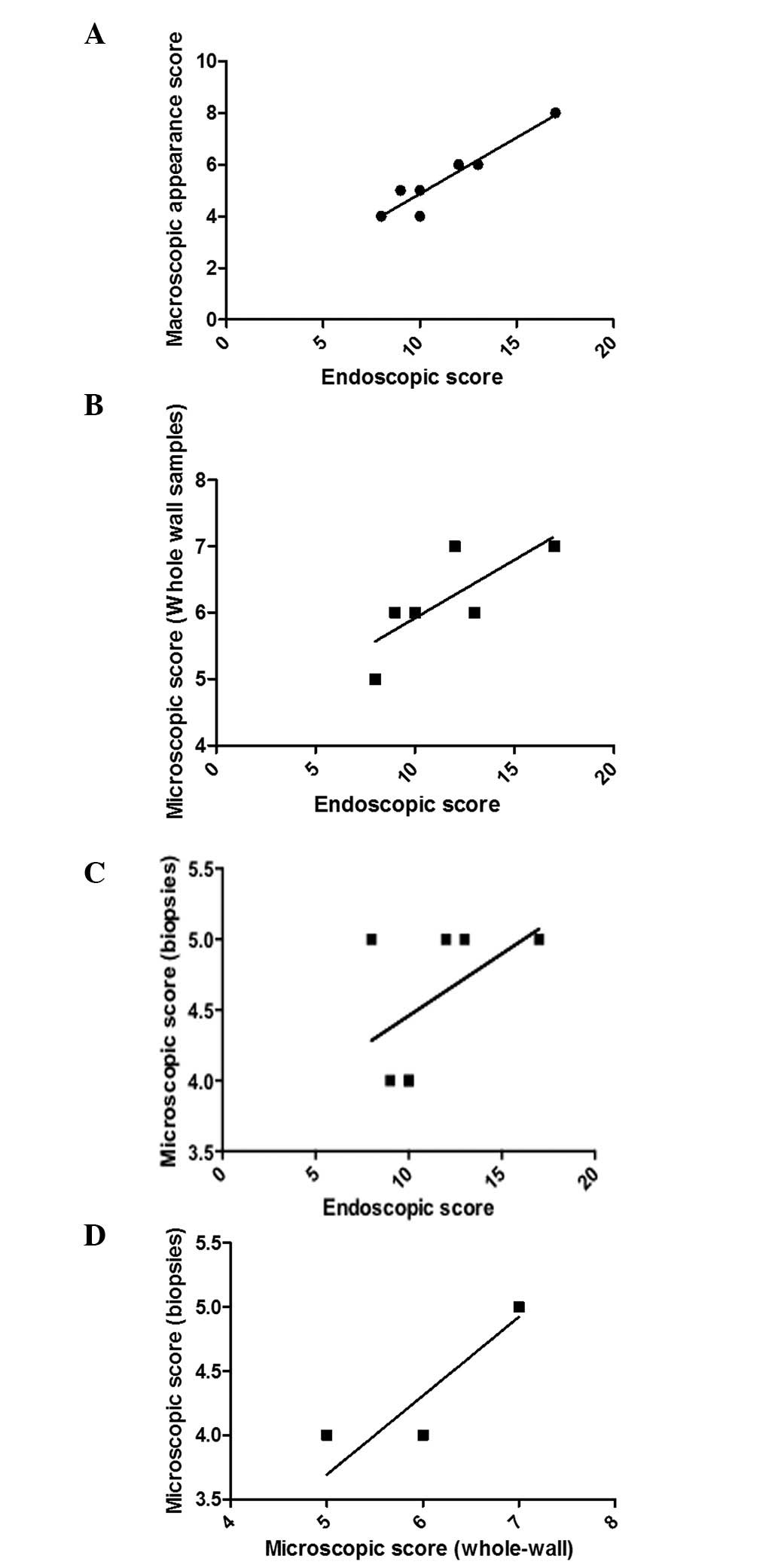 |
Figure 6
|
View References
|
1
|
Danese S and Fiocchi C: Etiopathogenesis
of inflammatory bowel diseases. World J Gastroenterol.
12:4807–4812. 2006.PubMed/NCBI
|
|
2
|
Nunes T, Fiorino G, Danese S and Sans M:
Familial aggregation in inflammatory bowel disease: Is it genes or
environment? World J Gastroenterol. 17:2715–2722. 2011.PubMed/NCBI
|
|
3
|
Heresbach D, Gulwani-Akolkar B, Lesser M,
et al: Anticipation in Crohn’s disease may be influenced by gender
and ethnicity of the transmitting parent. Am J Gastroenterol.
93:2368–2372. 1998.
|
|
4
|
Grandbastien B, Peeters M, Franchimont D,
et al: Anticipation in familial Crohn’s disease. Gut. 42:170–174.
1998.
|
|
5
|
Lee JC, Bridger S, McGregor C, Macpherson
AJ and Jones JE: Why children with inflammatory bowel disease are
diagnosed at a younger age than their affected parent. Gut.
44:808–811. 1999. View Article : Google Scholar : PubMed/NCBI
|
|
6
|
Faybush EM, Blanchard JF, Rawsthorne P and
Bernstein CN: Generational differences in the age at diagnosis with
Ibd: genetic anticipation, bias, or temporal effects. Am J
Gastroenterol. 97:636–640. 2002. View Article : Google Scholar : PubMed/NCBI
|
|
7
|
Hampe J, Heymann K, Kruis W, Raedler A,
Fölsch UR and Schreiber S: Anticipation in inflammatory bowel
disease: a phenomenon caused by an accumulation of confounders. Am
J Med Genet. 92:178–183. 2000. View Article : Google Scholar : PubMed/NCBI
|
|
8
|
Elson CO, Sartor RB, Tennyson GS and
Riddell RH: Experimental models of inflammatory bowel disease.
Gastroenterology. 109:1344–1367. 1995. View Article : Google Scholar : PubMed/NCBI
|
|
9
|
Saleh M and Elson CO: Experimental
inflammatory bowel disease: insights into the host-microbiota
dialog. Immunity. 34:293–302. 2011. View Article : Google Scholar : PubMed/NCBI
|
|
10
|
Milde AM and Murison R: A study of the
effects of restraint stress on colitis induced by dextran sulphate
sodium in singly housed rats. Integr Physiol Behav Sci. 37:140–150.
2002. View Article : Google Scholar : PubMed/NCBI
|
|
11
|
Vermeulen W, De Man JG, Nullens S,
Pelckmans PA, De Winter BY and Moreels TG: The use of colonoscopy
to follow the inflammatory time course of TNBS colitis in rats.
Acta Gastroenterol Belg. 74:304–311. 2011.PubMed/NCBI
|
|
12
|
El-Salhy M, Wendelbo I, Gundersen D,
Hatlebakk JG and Husken T: Colonoscopy in young rats with mucosa
biopsies: A model for experimental gastroenterology. Mol Med Rep.
7:1757–1760. 2013.PubMed/NCBI
|
|
13
|
Wallace JL and Keenan CM: An orally active
inhibitor of leukotriene synthesis accelerates healing in a rat
model of colitis. Am J Physiol. 258:G527–G534. 1990.PubMed/NCBI
|
|
14
|
Hunter MM, Wang A, Hirota CL and McKay DM:
Neutralizing anti-IL-10 antibody blocks the protective effect of
tapeworm infection in a murine model of chemically induced colitis.
J Immunol. 174:7368–7375. 2005. View Article : Google Scholar : PubMed/NCBI
|
|
15
|
Modigliani R: Endoscopy. Inflammatory
bowel disease. Järnerot G, Lennard-Jones J and Truelove S: Corona
Astra; Malmö, Sweden: pp. 243–267. 1992
|
|
16
|
Modigliani R: The pathology. Inflammatory
bowel disease. Järnerot G, Lennard-Jones J and Truelove S: Corona
Astra; Malmö, Sweden: pp. 269–293. 1992
|
















